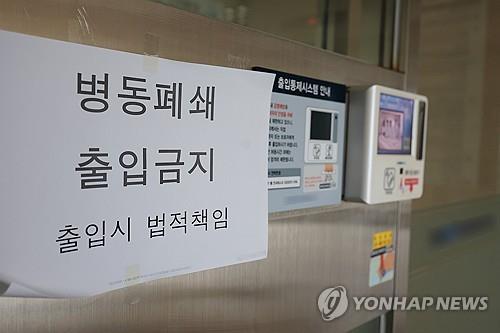- California Assembly OKs highest minimum wage in nation
- S. Korea unveils first graphic cigarette warnings
- US joins with South Korea, Japan in bid to deter North Korea
- LPGA golfer Chun In-gee finally back in action
- S. Korea won’t be top seed in final World Cup qualification round
- US men’s soccer misses 2nd straight Olympics
- US back on track in qualifying with 4-0 win over Guatemala
- High-intensity workout injuries spawn cottage industry
- CDC expands range of Zika mosquitoes into parts of Northeast
- Who knew? ‘The Walking Dead’ is helping families connect
Major hospitals in emergency mode amid huge losses over doctors’ walkout
Major general hospitals in South Korea have temporarily shut down part of their wards and rearranged staffs as they are struggling with snowballing losses over the prolonged walkout by trainee doctors.
More than 90 percent of the country’s 13,000 trainee doctors have been on strike for more than a month to protest the government’s decision to increase the medical school enrollment quota by 2,000 seats from the current 3,058 starting next year.
The five major hospitals — Asan Medical Center, Samsung Medical Center, Severance Hospital, Seoul National University Hospital and Seoul St. Mary’s Hospital — have suffered more than 1 billion won (US$741,344) of losses per day and have been in an emergency management mode to overcome the crisis, according to officials.
Seoul National University Hospital closed 10 out of its 60 wards on a temporary basis, including those for emergency patients and cancer patients after sending patients there to other wards, “for flexible operation given the current situation,” an official said.
It also secured a 100 billion won credit facility for overdraft to brace for further financial difficulties.
Asan Medical Center also closed nine out of 56 hospital wards and St. Mary’s Hospital vacated two of its 19 wards as part of their respective emergency responses.

Such moves came as the number of surgeries and other patient treatments have nosedived following the doctors’ walkout.
Hospitals have also said that they have no other option but to do so to better focus on emergency and seriously ill patients with a limited number of remaining medical personnel.
Some of the hospitals have been accepting applications for unpaid leave from their employees in an effort to cut labor costs and have postponed the recruitment process for nurses.
“We cannot even forecast when the situation will end as trainee doctors have not reported to work and professors have tendered resignations,” a hospital official said. “Remaining workers have also been thinly stretched.”
The country has experienced a serious medical service chaos as the government and doctors have remained deadlocked over the medical school quota hike, though President Yoon Suk Yeol has called for “flexibility” regarding the suspension of doctors’ licenses and dialogue.
The government has vowed to engage in active dialogue with doctors but stressed that the 2,000 quota hike is fixed and cannot be a matter of negotiation.
The government is pushing to increase the admission quota to address a shortage of doctors, particularly in rural areas and essential medical fields, such as high-risk surgeries, pediatrics, obstetrics and emergency medicine.
Given the rapid population aging and other issues, the country is also expected to fall short of 15,000 doctors by 2035.
But doctors argue that the quota hikes would compromise the quality of medical education and services and create a surplus of physicians, and the government must devise ways of better protecting them from malpractice suits and extending compensation to induce more physicians to practice in such “unpopular” areas.











